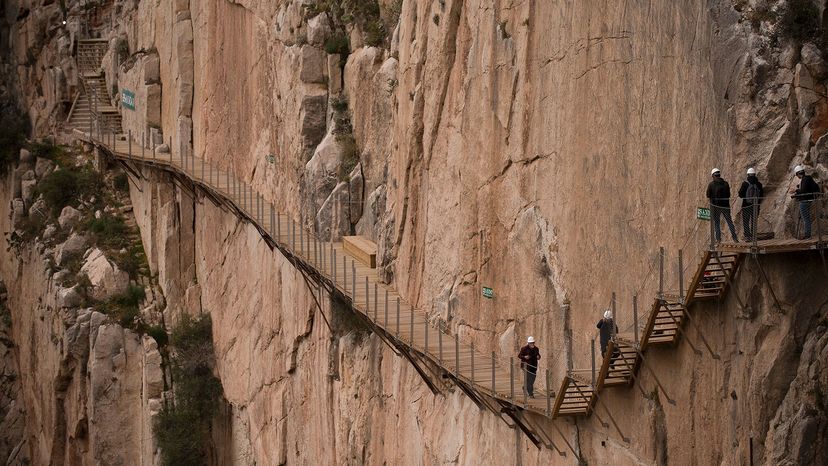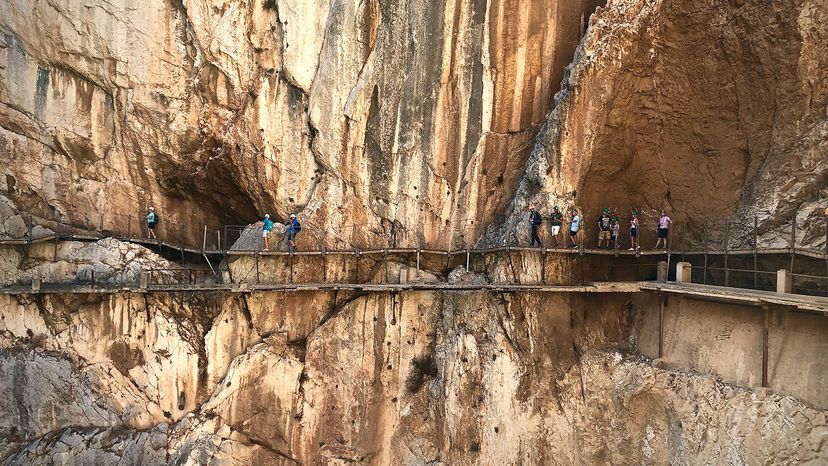My trek begins by hiking along a dirt access road, which is decidedly not scary. At the entrance gate near the reservoir, everyone receives a construction-type helmet and is placed into groups according to the entrance time on your ticket. Every 15 to 30 minutes, another group is allowed to head out. Soon our group of a dozen or so people are released onto the path, and we're off.
The water rushes from the reservoir and down a steep, rocky slope in a deafening roar as I begin walking along the boardwalk, a towering wall of limestone to my right. But the boardwalk is so sturdy and firm, I'm not nervous at all. Curiously, this brings both relief and a tiny ping of disappointment.
My nerves do start jangling when I get a good look at the previous path, which often curves into view when looking ahead or behind. It appears to be a scant 18 inches (45 centimeters) wide with a slim handrail and no side rails. No wonder some thrill-seekers pitched to their deaths. One misplaced step is all it would have taken.
About two hours into the hike, I reach the suspension bridge leading to the final section of boardwalk. My palms begin to sweat as I contemplate the slender, airy structure. My head knows it's as safe as the boardwalk, even with several people on it at once. But it's bobbing up and down, and there is no rock wall on one side to cling to.
I pull out my phone and get the camera ready so I don't have to spend any more time on the span than necessary. Then I carefully step on and begin to walk across. The bridge sways and lurches with each footstep. More unnerving, though, are the wind gusts that suddenly buffet me. We'd been so protected edging along the cliff walls, I hadn't noticed even the slightest breeze.
I know I should be enjoying the unobstructed views of the river far below, and the sight of the people still on the boardwalk behind me, who look like tiny specks moving along the cliff face. Instead, I fix my gaze on the solid rock wall in front of me and keep moving forward. Halfway across the span, I pause for a quick peek at the view, and to snap the requisite photo, then scurry across to the opposite side. The bridge crossing probably took a scant two or three minutes, but it seemed much longer.
About 45 minutes later, I'm off the cliff and back on solid ground near the El Chorro train station, the path's official ending point. Removing my helmet, I mentally cross another adventure off my bucket list and automatically begin contemplating another.
Interested in experiencing el Caminito for yourself? Be aware that due to safety and environmental constraints, annual traffic is capped at 300,000 visitors. This figure is easily reached every year, with tickets selling out well in advance. But any hassle involved with scoring tickets is well worth it. For there aren't many trails in this world that are this crazy, or that offer such incredible views.
Note: The path is open every day of the week except Mondays and a few days during Christmas week. The website recommends that you be reasonably fit if you're going to undertake this.





